Last updated June 2025 | Words and photos by Vietnam Coracle | 21 comments

Tom Divers is the founder and creator of Vietnam Coracle. He’s lived, travelled and worked in Vietnam since 2005. Born in London, he travelled from an early age, visiting over 40 countries (he first visited Vietnam in 1999). Now, whenever he has the opportunity to make a trip, he rarely looks beyond Vietnam’s borders and his trusty motorbike, Stavros. Read more about Tom on the About Page, Vietnam Times and ASE Podcast.
This week marks 7 years since Anthony Bourdain took his own life at Le Chambard Hotel Restaurant Alsace in Kaysersberg-Vignoble, France, on June 8, 2018. Following Bourdain’s death, there were many retrospectives of his life and work, but none that were dedicated solely to his coverage of Vietnam, a country for which he felt a special attachment. Indeed, I always hoped Bourdain would some day devote an entire series to Vietnam, during which he could really dive deep into the food, culture, history and landscape of the country he loved. Alas, that will never happen. Therefore, it seems to me that the best we can do is to pull together all of Anthony Bourdain’s Vietnam episodes from his entire TV career into a compilation spanning over a decade, from 2002 to 2016, and produced across three different shows: A Cook’s Tour, No Reservations, and Parts Unknown. I’ve also written a personal Reflection & Dedication to Bourdain.

[Back Top]
ANTHONY BOURDAIN IN VIETNAM
Below, I’ve reviewed all eight Vietnam episodes from Anthony Bourdain’s TV career in chronological order, from oldest to most recent. If, like me, you love Vietnam and admire Bourdain, I can’t recommend highly enough watching all eight episodes in the order in which they were produced: it’s a vicarious odyssey – fascinating, fun, enriching, charming, and also at times very moving. For each of Bourdain’s eight Vietnam episodes, I’ve included some production details and written a synopsis and review. My reviews are entirely subjective: I didn’t know Bourdain personally and I can’t claim to have any special knowledge of him or his TV productions. I was (I am) just a fan of Bourdain and his work. I’ve also included a personal Reflection & Dedication to Anthony Bourdain.

- A Cook’s Tour: Season 1, Episode 3 | ‘Foods That Make You Manly’ (2002)
- A Cook’s Tour: Season 1, Episode 4 | ‘Eating on the Mekong’ (2002)
- A Cook’s Tour: Season 2, Episode 12 | ‘My Friend Linh’ (2003)
- No Reservations: Season 1, Episode 4 | ‘The Island of Mr Sang’ (2005)
- No Reservations: Season 5, Episode 10 | ‘There’s No Place Like Home’ (2009)
- No Reservations: Season 6, Episode 10 | ‘Central Highlands’ (2010)
- Parts Unknown: Season 4, Episode 5 | ‘Vietnam’ (2014)
- Parts Unknown: Season 8, Episode 1 | ‘Hanoi’ (2016)
Personal Reflection & Dedication to Anthony Bourdain:
It’s clear Bourdain and his work meant a lot to many people around the world. But for those with a connection to Vietnam – be it through travel, work, family or food – Bourdain’s love of the country endeared him to us to such an extent that one almost felt a personal bond with him. Bourdain ‘got’ Vietnam in a way that no other high-profile TV personality, commentator, or documentary maker outside the country ever did. He instinctively understood the charm and aesthetic of streetside al fresco dining, the complex and explosive flavour profile of Vietnam’s numerous noodles soups, the tension between the generations and between past and present – a past often lingered over more by Westerners than by Vietnamese – among many other aspects of the country and culture. Bourdain appeared to feel at home in Vietnam – referring to it variously as “one of my favourite places on Earth”, “my place of dreams, my spirit house”, “my first love” – while also in awe of its daily exoticisms. Like many others before and after him, Bourdain fell for Vietnam.
Anthony Bourdain was a great ambassador for Vietnam – its food, people and culture. His Vietnam episodes inspired a generation of travellers, giving them the confidence to visit the country, try the street food, interact with the people – in the markets, the streets, the rice paddies. Through his work, Bourdain projected an overwhelmingly positive, but also complex and nuanced, image of Vietnam to the rest of the world, and fired the interest and enthusiasm of people of all ages to visit. I don’t think it’s possible to overstate the impact Bourdain and his shows had on people’s impressions of the country, particularly in the West, and on the surge in interest of travel to Vietnam. Of course, I can only speak as a non-Vietnamese. Still, among my Vietnamese friends, Bourdain is relatively well-known – some are huge fans of his work. But people in Vietnam already knew their cuisine was superb and their history and culture fascinating. What my Vietnamese friends like most about Bourdain is that a ‘foreigner’ – an American from New York – was so enamored of their country and culture that he took the time to explore and understand it and present it in a positive light to a global audience.
Like a lot of people, I was surprised by how much Bourdain’s death affected me. For a long time I found I couldn’t re-watch or enjoy any of his shows: it was just too sad. I remember where I was when I heard he had died: in the dining car of a train rattling through the night from Quy Nhon to Saigon, having spent the week researching a guide to the beaches of the central coast. Shocked and saddened, I returned to my sleeping compartment and wrote a brief tribute to Bourdain on the Vietnam Coracle Facebook page. As a testament to how much he means to people with an interest in Vietnam, that Facebook post reached some 50,000 people, more than any other I’d posted previously or since.

Indeed, I still find it difficult to re-watch the episodes reviewed on this page: in part because of the knowledge that no more episodes will ever be made, but also because, in some cases, the Vietnam depicted in the shows has either disappeared or is fading fast, such is the pace of change during the country’s ongoing economic boom. In addition, Bourdain’s first Vietnam episodes were aired at roughly the same time I first visited Vietnam, so there’s a personal pathos in re-watching these shows: sometimes I feel like I’m watching my own past. And within these episodes is Bourdain’s own personal narrative: how his relationship with the country grows and deepens, how he changes as a host and as a human, how his views and values shift, how he ages and matures, and how, as the episodes progress through the years, he moves from starry-eyed first-time traveller to veteran visitor. Hence, there’s a certain reverence, nostalgia and sadness in the tone of the reviews on this page. Nevertheless, this is intended to be a celebration: of Bourdain, of Vietnam, and of exceptionally well-made travel and food TV.
Although some of the content and commentary in the much rawer earlier episodes of A Cook’s Tour might now seem inappropriate or gratuitous, I still love these episodes, and in most cases Bourdain and his crew saw and admitted their mistakes in hindsight and learned from them as they continued to produce future shows about Vietnam. The only real issue I have with any of Bourdain’s Vietnam episodes is that he could never really let go of ‘the war’, which is ultimately touched upon in almost every Vietnam episode. It would have been nice if he could have let the conflict be and focus instead, as almost all Vietnamese do, on the present and future. I suppose it just goes to show that the war – that war, at least – looms larger in the American consciousness than it does in the Vietnamese, and there are many deep historical and cultural reasons for this. Re-watching these episodes in chronological order was at once enjoyable and sad. There are still so many places for Bourdain to visit in Vietnam, so many more dishes for him to try, so many more episodes for him to make.
Back to Contents]
A Cook’s Tour: Season 1, Episode 3
• Episode Title: ‘Food That Makes You Manly’
• Original Air Date: January 2002
• Subjects & Themes: street food, ‘weird’ food, Saigon
• Locations: Ho Chi Minh City (Saigon), Ben Thanh Market, Cơm Niêu Sài Gòn, La Bibliotheque, Nhà Hàng Hương Rừng
• Food: hột vịt lộn (fetal duck egg), cháo mực (squid porridge), cơm niêu (‘flying rice’ & family-style southern dishes), bò lá lốt (beef rolled in betel leaves), cobra
• Where to Watch it: download torrent of whole season 1 from Pirate Bay; bad quality YouTube & other online video sharing versions available, sometimes available of streaming platforms like Netflix & Amazon
• Synopsis & Review: In this, one of the first episodes ever aired and the first in Vietnam, Bourdain opens with a eulogy to Vietnam which sets the tone for the next 15 years of his visits to the country: “…intoxicating…beautiful…exotic…dreamlike…sensuous”. Tony then heads across the streets (remarking, as everyone does, on the traffic and the appearance of controlled chaos) to Ben Thanh Market in search of hột vịt lộn – fetal duck egg. Obviously a gross-out snack for most of his Western audience, in reality this is a common, tasty, fortifying, comforting and nutritious snack. Strange, then, that Bourdain doesn’t really go for it. Ben Thanh Market might be a tourist trap but the cooked food and fresh produce sections are excellent, as Bourdain discovers.
As Tony ambles through the city – noticeably shy of looking down the camera lens – it’s impossible not to observe how rough around the edges Saigon (and downtown District 1 of all places) looks compared to the present-day. A cyclo, another formerly iconic feature of Saigon that’s now hardly ever seen, scoots Bourdain to a local cháo mực (squid porridge) hole in the wall. This looks like the real deal: it’s got everything in it, from coagulated pig’s blood to torn morsels of bánh quẩy (twisted fried bread). “Fabulous”, says Bourdain. It’s almost painful to watch: you can see (and hear) Bourdain falling for the city and the country in real time as the episode progresses. If, like me, you also have a deep attachment to Vietnam, you can’t watch this episode and fail to notice Anthony Bourdain falling under its spell. It’s quite moving.

At dinner, at the now extremely famous Cơm Niêu Sài Gòn, we get our first glimpse of Linh, Bourdain’s government-approved Vietnam fixer, who becomes great friends with the host and features in every subsequent episode in the country. Owned by Madame Gao (Lê Thị Hồng Ngọc), the restaurant’s signature dish is ‘flying rice’, an ingenious gimmick but also delicious. The Cơm Niêu scene is warm-hearted, exceptionally well narrated off-the-cuff (Tony’s clearly high on the experience), and a great advertisement for Vietnamese family-style dining. Rau muống xào tỏi (stir-fried morning glory with garlic), thịt kho trứng (braised pork and egg stew), canh chua (sour soup) and lots of seafood – these are all classic, homey, southern dishes.
Another dinner finds Bourdain formally dressed for a meal at La Bibliotheque, a long-running, colonial-style, memorabilia-filled Vietnamese restaurant owned by Madame Dai. Finally, Tony heads to a well-known ‘jungle flavours’ (i.e. exotic animals) restaurant in Saigon to try the infamous multi-course cobra meal, including its palpitating heart. This was something many backpackers would do in the early 2000s, but it’s hard to imagine a TV show getting away with a scene like this nowadays – think of the uproar on social media and the pressure to ‘cancel’ the show (Bourdain might have enjoyed that, but would the network?). Indeed, the scene does now feel a bit unnecessary and even juvenile: just something to tell your friends at a cocktail party, as Bourdain remarks. However, it’s during this long scene that Bourdain appears to relax and grow into his role as host. After several shots of snake blood-infused rice liquor (not to mention the shot of adrenaline he must have got from swallowing the cobra heart), Tony’s on fire: sharp, acerbic, raw, articulate, engaging, entertaining.
Screenshot: Bourdain smokes after finishing his multi-course cobra meal in Saigon (Ho Chi Minh City).
A Cook’s Tour: Season 1, Episode 4
• Episode Title: ‘Eating on the Mekong’
• Original Air Date: January 2002
• Subjects & Themes: river & coastal life, food & the family
• Locations: Mekong Delta, Cai Rang floating market (Can Tho), Nha Trang, Bao Dai’s Villa
• Food: floating vendors, clay-baked duck (vịt nướng đất sét), seafood feast (hải sản), bird’s nest (yến sào)
• Where to Watch it: download torrent of whole season 1 from Pirate Bay; bad quality YouTube & other online video sharing versions available, sometimes available on streaming platforms like Netflix & Amazon
• Synopsis & Review: Tony meets his former boss, Philippe Lajaunie, in Ho Chi Minh City and the two of them head to the Mekong Delta. Breakfast noodles and coffee in the early morning from the floating vendors of Cai Rang river market, near Can Tho, finds them both in awe of the food and the choreography of riverine life. This floating market subsequently became a touchstone for every traveller (and TV personality) to the region, to the extent that, in pre-Covid times, the market sometimes felt like a show put on for tourists.
Traveling upstream, Bourdain disembarks at Uncle Hai’s family home for a feast of vịt nướng đất sét (clay-baked duck) and plenty of shots of rice liquor. Bourdain remarks on the social aspect of the preparation, cooking and dining: how many people are involved in each step, requiring communication, trust – it’s a shared event. This is a fundamental aspect of so many parts of Vietnamese life and society. Bourdain carves the bird and everyone eats on a tarpaulin laid out on the ground in the garden as the light fades and night falls over the Mekong River. The entire extended family (and half the local community) joins the fun and the two guests become increasingly charmed and overwhelmed by the experience as the night progresses from grilling to eating to drinking to singing. Anyone who’s travelled or lived in Vietnam will be able to relate to being warmly and enthusiastically taken under the wing of a local family or group of friends for a night of food and drink. But not everyone can give themselves over to the experience and enjoy and respect it as much as Tony and Philippe do in this scene.
Philippe departs and Bourdain continues on his way to Nha Trang, which he describes as a ‘sleepy fishing community” – well, not so much anymore: try ‘sophisticated, hedonistic beach town’. A coracle ride out to a floating fish farm introduces Bourdain to Vietnam’s informal, deceptively simple approach to cooking and eating fresh seafood – lobster (tôm hùm), crab (cua), grouper (cá mú) and the ultimate Vietnamese seafood dip: lime squeezed into salt and pepper. Tony enjoys the post-dining mess of shells and sauce – “Stalingrad after the war”. Retiring to his lodgings in the former emperor Bao Dai’s villa in the hills behind Nha Trang, Bourdain settles down to a meal of bird’s nest soup. The swiftlet’s nests are prized for their medicinal benefits and fetch very high prices. Not overly impressed, Tony returns to his room to nurse some nest-related tummy trouble in a scene heavily referencing Apocalypse Now.
Screenshot: Bourdain speaks to camera on a wooden boat up the Mekong River to Cai Rang floating market, Can Tho.
A Cook’s Tour: Season 2, Episode 12
• Episode Title: ‘My Friend Linh’
• Original Air Date: June 2003
• Subjects & Themes: Tet (Vietnamese Lunar New Year) food & traditions, Bourdain’s friendship with his Vietnam fixer, Linh
• Locations: Hanoi
• Food: bún ốc (snail noodle soup), bánh tôm (shrimp cakes), bánh chưng (savoury sticky rice cake), gà nướng lá chanh (grilled chicken with kaffir lime leaf), cá lóc (snakehead fish), lươn nướng ống tre (eel cooked in bamboo)
• Where to Watch it: Download torrent of whole season 2 from Pirate Bay; bad quality YouTube & other online video sharing versions available, sometimes available on streaming platforms like Netflix & Amazon
• Synopsis & Review: Bourdain arrives in a damp, grey and drab-looking Hanoi just in time for Tet (Vietnamese Lunar New Year) with Linh, his translator and fixer from previous episodes in the country. Fortunately, Hanoi’s food scene brightens up the miserable winter weather as Tony and Linh eat their way through a food market – Tony giddy with excitement. Dressed in a suit, Bourdain enters Linh’s family home to start the Tet celebrations. The rice liquor comes out (mixed with bear bile – not something any TV show would get away with now, I’d imagine) and the men drink while the women cook up a feast. When the spread is laid before them, Bourdain remarks on the balance and contrasts of flavours and colours that’s so essential to Vietnamese cuisine.
Later in the episode, Tony enjoys a meal cooked by a locally famous chef in Hanoi’s Old Quarter. After dining on grilled chicken with kaffir lime leaf and rolled snakehead fish, Bourdain’s offered a post-meal cup of cà phê (coffee) and reveals that he thinks Vietnam makes the best coffee in the world. The show ends at one of Linh’s secret foodie hideaways: an eel house in the back-streets of Hanoi – and very nice it looks, too. The two men dine on lươn nướng ống tre (eel cooked in a length of bamboo). Bourdain signs off with another earnest eulogy to Vietnam.
Screenshot: Bourdain in Hanoi eating bún ốc (snail noodles) on Hoan Kiem Lake.
No Reservations: Season 1, Episode 4
• Episode Title: ‘The Island of Mr Sang’
• Original Air Date: August 2005
• Subjects & Themes: ethnic minority food, culture & homestays in the northern mountains, new tourism projects in Ha Long Bay
• Locations: Hanoi, Hotel Metropole, Mai Chau, Tuan Chau Island (Halong Bay)
• Food: bún chả (pork noodles), ‘squeezel’ (porcupine), rice liquor (rượu), cơm lam (rice in bamboo)
• Where to Watch it: Download torrent of whole season 1 from Pirate Bay; sometimes available to buy, rent or stream via YouTube, Travel Channel, Amazon, Netflix
• Synopsis & Review: After an incongruous Bond-themed opening sequence, Tony choppers out of New York City bound for Vietnam. Described as a ‘pay-back mission’, Bourdain is on his way to meet Linh (yes, that Linh: Tony’s fixer and friend). This trip is Bourdain’s way of returning the favour to his friend: Linh has something he wants to show Bourdain and, through him, the rest of the world. Linh picks Bourdain up outside the grand French colonial-era Hanoi Hotel Metropole. The two ride off (conspicuously un-helmeted as this was just before helmets became mandatory in Vietnamese cities) through the chaotic-looking capital. Settling down to a bowl of bún chả (the ubiquitous and much-loved Hanoi dish of grilled pork and noodles), the two friends slurp their way to fulfillment. Before turning in for the night, Tony reasserts that he has no clue as to what Linh has in store for him on this trip.
Early next morning, Tony bundles into a minivan with Linh and his family and they take the road to the White Thai minority village of Mai Chau, a beautiful region of limestone karsts and lush valleys southwest of Hanoi. At that time, Mai Chau was a fledgling homestay initiative and this is what Linh wants Bourdain to see (and promote to the world). Indeed, it must have worked, because these days Mai Chau is an enormously popular day-night trip from Hanoi and the homestays number in the hundreds. Along the way, a lunch stop leads to a famous scene during which Bourdain dines on what Linh describes as ‘squeezel’ which, it transpires, is porcupine (nhím). Over lunch, the establishments’ full array of home-made animal-infused rice liquor (rượu) is offered and shot back by all around the table.
Enchanted by the valley (Bourdain says he’s “never laid naked eyes on anything like it”), the group climb the wooden steps to inspect the rustic kitchen of the stilt house they’ll be dining and sleeping in. Before dinner, Tony’s introduced to the dour local People’s Committee chairman who states his desire that Mai Chau be promoted through this TV show. Things threaten to become stale and business-like, but the chairman and Tony find common ground in shooting rice liquor and trying their hand at traditional dancing. The feast is spread on the floor – a delicious-looking combination including bò lá lốt (beef wrapped in aromatic betel leaf) and cơm lam (rice steamed in a length of bamboo) – and the men eat together and get comprehensively drunk, ultimately leading to the chairman loosening up and a great time is had by all.
Chugging between the limestone karsts of Ha Long Bay in a boat, Bourdain, Linh and his crew – all formally dressed – make their way to the ‘Island of Mr Sang’, a newly opened tourism complex on the island of Tuan Chau, near Ha Long City. This is Linh’s (and Mr Sang’s) big sell to Tony’s international audience. On the island, Bourdain is entertained by exhibitions of martial arts on the beach before finally being introduced to Mr Sang himself at a banquet dinner. But before dining, Bourdain, as guest of honour, is treated to an awkward procession of musical and dance performances (there’s no audience except himself, Linh and Mr Sang). And then, things get even more awkward and bizarre as Mr Sang hijacks the cameras and turns the evening into his own cooking show, demonstrating his prowess in the kitchen. Although Bourdain is clearly taken aback by this stunt, when it comes to eating the food prepared by Mr Sang he softens to the situation, the man, and the surroundings. All eat and drink happily into the evening.
Screenshot: Bourdain waits for his ‘squeezel’ (porcupine) to arrive on the way to Mai Chau.
No Reservations: Season 5, Episode 10
• Episode Title: ‘There’s No Place Like Home’
• Original Air Date: March 2009
• Subjects & Themes: street food, moving to Vietnam, house-hunting in Hoi An
• Locations: Ho Chi Minh City (Saigon), Bánh Xèo 46A, Nguyen Thuong Hien Street, the Lunch Lady, Hoi An
• Food: bánh xèo (savoury pork & shrimp filled pancakes), ốc (snails), bún bò Huế (Hue-style beef noodle soup), cao lầu (pork noodles), bánh mì (filled baguette)
• Where to Watch it: Download torrent of whole season 5 from Pirate Bay; sometimes available to buy, rent or stream via YouTube, Travel Channel, Amazon, Netflix
• Synopsis & Review: After a hiatus of nearly four years without shooting a show in Vietnam, this episode, perhaps because of his long absence, is Bourdain’s most successful, warm, and heartfelt love letter to the country. It’s also the most personal of all Bourdain’s Vietnam shows and my favourite. The film opens with a Vietnamese folktale around a fire about the nature of ‘home’ and ‘change’, both of which are central themes of the episode. Bourdain’s first stop in Saigon is the famous Bánh Xèo 46A – still hugely popular today and largely unchanged (apart from the prices and the multi-language menu). Tony shares his bánh xèo (‘sizzling’ savoury pork- and shrimp-filled pancakes) with Hà, who will become a familiar face in this and all subsequent Vietnam episodes of No Reservations and Parts Unknown. Bourdain remarks on how the al fresco setting is so essential to the dining experience: “I don’t want to eat this in a dining room with chairs and a carpet”.

In the evening, Tony and Hà dine on Nguyễn Thượng Hiền, known as ‘ốc street‘ – street of snails. Eating snails and other crustaceans is a national past-time in Vietnam and an essential dining (and drinking) experience for anyone who wants to get to know the food culture. On low plastic chairs on the roadside, the two tuck into crab claws, snails, shrimp and chickens feet while the traffic roars by, mobile karaoke blares out, and street performers blow flames.
Interestingly, in this episode Bourdain, having travelled to Vietnam many times over almost a decade, now has a personal history with the country and a nostalgia for certain aspects of it that may be disappearing as the nation continues on its path to industrialization. As if to underline this, Tony reconnects with Philippe Lajaunie, his former boss who made an appearance on Bourdain’s first TV show in Vietnam, A Cook’s Tour (see Contents). The two friends ride in a Soviet-era Ural sidecar motorcycle to the Lunch Lady. Already famous before Bourdain filmed here, the Lunch Lady (Nguyễn Thị Thành) is still serving a different soup every day at the same spot under the umbrella tree near the Nhieu Loc-Thi Nghe Channel. On the day of their visit, the soup is bún bò Huế (Hue-style beef noodles). The pair are greatly impressed and wax lyrical about the soup – “a broth that the gods were suckled on” – and the setting. Post-Bourdain’s visit there’s been a lot of attention and debate over whether the Lunch Lady is ‘worth the hype’. My opinion, which you can read on this page, is that in general the Lunch Lady is a great introduction to the flavours, smells, complexity and variety of Vietnamese soups and the aesthetics of streetside dining in Vietnam. However, she’s by no means the only lunch lady in Saigon; there are many others.
Bourdain and Philippe take a flight to Hoi An in Central Vietnam. The pastel-coloured shophouses of the old town and bright greens of the surrounding rural landscape are in stark contrast to the concrete and chaos of the city they left behind. Falling under the spell of Hoi An is almost a rite of passage for any traveller to Vietnam, and Bourdain is no different. Strolling through Hoi An market leads to a breakfast of the local speciality, cao lầu (pork noodles). In much the same way that almost all visitors fall for Hoi An, so too do most visitors fall for cao lầu, a delicious, colourful and highly textural dish. Still not full, Tony and Philippe pay a visit to a bánh mì (filled Vietnamese baguette) stall outside the market. Central Vietnamese baguettes have a distinctive shape and the ones at Bánh Mì Phượng (now with long queues stretching outside every day) are loaded with goodies – “a symphony in a sandwich”.
Bourdain reveals that he plans to move to Vietnam: to bring his family here and live for a while. So he begins house-hunting with a local realty agent. Riding from house to house on motorbikes, they visit a traditional palm-thatched home and a swanky poolside villa. (Sadly, Bourdain never did move to Vietnam). The next day, Tony heads up the Thu Bon River for a meal with a local family who fought on different sides during the war.

Finally, back in Ho Chi Minh City Bourdain revisits Cơm Niêu Sài Gòn (the famous ‘flying rice’ establishment featured in A Cook’s Tour) and then to the pagoda to pay his respects to his late friend, Lê Thị Hồng Ngọc, owner of Cơm Niêu. It’s a sad sequence and Bourdain finds himself wondering if, with all the changes that Vietnam’s gone through since he first visited – “when everything was fresh and new” – he could ever live and be happy with his family here. But as he contemplates this, sitting on the curbside of a busy street watching the ebb and flow of Vietnamese life all around him, Bourdain realizes this is the Vietnam he loves, and it’s still here: “I hope that will never change.”
Screenshot: 1. Bourdain outside the Hotel Continental, Saigon (Ho Chi Minh City) with a copy of Graham Greene’s ‘The Quiet American’; 2. Bourdain enjoys the Lunch Lady’s bún bò Huế in Saigon.
No Reservations: Season 6, Episode 10
• Episode Title: ‘Central Highlands’
• Original Air Date: March 2010
• Subjects & Themes: ethnic minority culture & food, French colonial period, Hanoi street food
• Locations: Dalat, Palace Hotel, Bao Dai Summer Palace, Linh Phong Pagoda, Hồ Suối Vàng Lake, Hanoi
• Food: cháo vịt (duck rice porridge), canh chua chay (vegetarian sour soup), heo rừng (wild boar), rượu cần (rice wine infused with herbs & spices), chim sẻ (sparrows), bún ốc (snail noodle soup), bánh cuốn (steamed rice rolls)
• Where to Watch it: Download torrent of whole season 6 from Pirate Bay; sometimes available to buy, rent or stream via YouTube, Travel Channel, Amazon, Netflix
• Synopsis & Review: Opening in the opulent setting of the French colonial-era Palace Hotel, Bourdain is in the Central Highlands city of Dalat, a former French hill station 1,500 metres up in the misty mountains of what was once Indochine. Bourdain’s guide around the region is, once again, Linh. The pair meet for a hearty and warming evening meal of cháo vịt (duck rice porridge) on the chilly streets of Dalat.
A lot of Dalat’s appeal is about its past. For half a century it was the favoured retreat for French colons and Vietnamese emperors alike. Bourdain visits the former summer palace of Bảo Đại, last of the Nguyen Dynasty emperors of Vietnam. An appealing Art Deco structure among pines on a hillside near the city centre, Tony and Linh stroll through its grounds discussing the last emperor. Next, Tony climbs the steps to Linh Phong Pagoda where he’s treated to a ‘guilty’ vegetarian meal with the nuns (whilst trying to block out flashbacks of all the animals he’s eaten on previous shows).
The next day, Linh takes Tony to a barbecue shack on the shores of Suối Vàng Lake, a scenic setting for a protein-rich breakfast. The tabletop grill features heo rừng (wild boar) and ‘mouse deer’. The latter Tony is tricked into eating by Linh and finds it has a ludicrously rubbery texture. (Subsequently, this scene had to be edited after complaints that it was illegal to catch and sell wild mouse deer.)

Driving out of Dalat, Tony visits the villages and homes of the M’Nông and Ede ethnic groups, discussing the tensions that have existed between them and the majority Kinh Vietnamese, and what the future might hold for their cultures. Bourdain dines on the wooden floor of an Ede family’s home and partakes in the drinking of rượu cần (rice wine infused with herbs and spices), drunk through a long straw from a communal jug.
Next up for Bourdain is Hanoi, to which he gives a great voice-over introduction while gliding through the streets on the back of Linh’s motorbike (although times have changed since their earlier two-wheeled adventures and they are now both wearing helmets). Bourdain highlights the burgeoning youth of the city, the rich food culture on every street, and the organic nature of the throng of motorbikes coursing through the city’s arteries. Tony’s joy at being back in the capital is written all over his face. He and Linh meet up with Hà (from the previous Vietnam episode of No Reservations) at a insect and bird restaurant. The standout dish is fried sparrows (chim sẻ chiên). “Amazing”, says Bourdain. I remember watching this episode when it first aired and going straight out in Saigon looking for a place with sparrows on the menu: they are, indeed, delicious – gamey, rich and small enough that you can eat them whole, bones, head and all. Visibly pumped up and giddy with excitement, Bourdain and his friends stroll through a foodie neighbourhood and sit down to a bowl of bún ốc (snail noodle soup) and bánh tôm (shrimp cake). Later, Tony dines on bánh cuốn (steamed rice rolls), but there’s an unexpected second course: water bugs. Finally, everyone eats (and drinks) together at a rooster restaurant where a cock fight determines which bird ends up on the stove.
Screenshots: 1. Bourdain shakes hands with his friend, Linh, at a cháo vịt (duck porridge) eatery in Dalat, Central Highlands; 2. Bourdain unknowingly tucks into some ‘mouse deer’ at Suoi Vang Lake.
Parts Unknown: Season 4, Episode 5
• Episode Title: ‘Vietnam’
• Original Air Date: October 2014
• Subjects & Themes: Hue food & imperial culture, tradition vs modernity, past vs present, reflections on the war
• Locations: Hue, the imperial palace, Vinh Moc Tunnels (Quang Tri Province), Tam Giang Lagoon
• Food: cơm hến (clam rice), bún bò Huế (Hue-style beef noodles), lươn nướng (grilled eel), yến sào (bird’s nest soup), bánh bèo (little savoury rice cakes)
• Where to Watch it: Sometimes available to stream, buy or rent episode on Amazon or Netflix; download torrent of whole season 4 from Pirate Bay
• Synopsis & Review: After another break of four years since he last filmed in Vietnam, Bourdain returns to his “place of dreams” in good spirits, literally and figuratively. This is because he’s in Hue: a city of ghosts, haunted by its imperial past and the conflicts of the twentieth century. I’m not sure why, but Bourdain always seems to visit central and northern Vietnam is grey conditions: there’s very little colour in the landscapes or light on the city streets. Perhaps he and his production team don’t like the heat and sun, but it’s a shame because Vietnam rarely looks its vibrant best in Bourdain’s shows shot in these regions. Fortunately, cities like Hue exude charm no matter what the weather or light is like. And so the grey, flat, mist-shrouded streets that Tony negotiates on his scooter are mysterious, exotic and full of great food. Bourdain pulls onto the sidewalk at a street stall for a bowl of cơm hến (clam rice), a Hue classic that’s ubiquitous, simple and delicious. Seated on a red plastic stool at a red plastic table, Tony speaks to camera in an iconic ‘I love Vietnam’ scene: “Fellow travellers, this is the path to true happiness and wisdom”.
In the maze of stalls in Dong Ba Market, Tony meets Vietnamese-American author, Nguyễn Quí Đức, for a bowl of bún bò Huế, the definitive Hue dish: a spicy, aromatic beef noodle soup (also featured in the Lunch Lady scene in No Reservations). Bourdain proclaims it “the greatest soup in the world”. In the evening Tony meets up with his old friend, Linh, at a seafood restaurant for some grilled eel and lobster. The two reminisce on old times, comparing photos of themselves from 15 years ago and how they have (or, in Linh’s case, haven’t) aged.
Over a montage of flowing images from the road, Bourdain speaks of the intimacy that comes from the motorbike-riding culture in Vietnam – the smells, the sounds, the sights you experience from the saddle: “One of the great joys of life is riding a scooter through Vietnam.” The tone changes suddenly and the subject is war: the battle for Hue after the 1968 Tet Offensive was long, bloody and brutal, including the massacre by north Vietnamese of some three thousand people who were buried in a mass grave outside the city. Nguyễn Qúi Đức, who lived through this as a boy, talks about his past but contrasts it with the present in Vietnam, which is youthful, vibrant, optimistic and peaceful.
Bourdain meets artist, Bội Trân, at her restored traditional home. They gather with other friends for a rather formal, imperial-style meal of Hue specialities, including bird’s nest soup (yến sào). The ambience of this dining scene is an interesting contrast to the more casual, streetside meals Bourdain enjoys, such as the one that opens this episode.
Riding in a coracle off the beaches of Quang Tri Province, Bourdain arrives at the war-era tunnels of Vinh Moc. The tunnels were dug to create shelter from U.S bombing for the entire village during the war. Vinh Moc is only just north of the Ben Hai River, the natural barrier than once marked the DMZ along the 17th parallel. This is the most war-heavy of all Bourdain’s Vietnam shows: as well as the places visited and the discussions about the past, the grey, leaden skies, muted colours and hushed sounds of the episode all conspire to create a bleak and introspective mood. However, this is always balanced with a view of the present and future, which, thankfully, is much brighter than the past. Bourdain rides through flooded fields for lunch with food blogger, Lan. They eat all the famous local bánh, including bánh bèo (little savoury rice cakes) and bánh bột lọc (shrimp-filled tapioca dumplings). The final scene is a meal of clay-baked chicken in a wood-and-brick gazebo above the rice paddies with Linh, Lan, Hà and Thanh.
Screenshot: Bourdain enjoys a bowl of cơm hến (clam rice) at a streetside stall in Hue.

Parts Unknown: Season 8, Episode 1
• Episode Title: ‘Hanoi’
• Original Air Date: September 2016
• Subjects & Themes: U.S-Vietnam relations, tradition & modernity, socio-economic change
• Locations: Hanoi, the Old Quarter, Halong Bay
• Food: bún ốc (snail noodle soup), bánh cuốn (rice rolls), bún chân giò (pig trotters soup), bia hơi (fresh-brewed draft beer), bún chả (pork noodles)
• Where to Watch it: Sometimes available to stream, buy or rent episode on Amazon or Netflix; download torrent of whole season 8 from Pirate Bay
• Synopsis & Review: After another opening song of praise for Vietnam – voiced over clips of Bourdain zigzagging through the busy streets of Hanoi on a motorbike – Tony sits down on a low plastic stool for his go-to noodle dish in the capital, bún ốc (snail soup). In this episode, sadly his last in Vietnam, we finally see Hanoi and the north in the summer sunshine (and tropical downpours). Between heavy showers, Bourdain has dinner with Thảo at a local bánh cuốn (steamed rice rolls filled with pork and mushrooms) shop. The two talk about U.S-Vietnam relations and how they have changed over the last 50-60 years. It’s interesting to note that Bourdain’s Vietnam shows become more war-focused with each new episode.
Tony meets up with Hà and her Zumba instructor after their class in the park. They sit down to a bowl of bún giò (pig trotter noodle soup) at an eatery known as bún chửi (cussing noodles) on account of the proprietress’s tendency to lose her temper, shout, scold and curse at her customers. Bourdain received some flak for this scene, as many Vietnamese suggested it wasn’t such a good idea to promote and encourage this kind of impolite behaviour. However, it would appear that the food is good enough that most of her customers are willing to put up with the verbal abuse. In the evening, Tony meets his long-time friend, Linh, for a bia hơi (fresh-brewed draft beer) session on the streetside.
Floating through the limestone karsts of Ha Long Bay on a restored French-era steamer, Bourdain dines on freshly caught squid onboard with Linh and the crew. Outside, the bay is much busier with tourist craft than it was in the same location a decade earlier in the ‘Island of Mr Sang’ episode. The next morning, Tony meets Hà on a family’s floating fish and pearl farm in the bay. Over a meal of grilled fish they discuss the issue of relocating ‘floating families’ such as this one to inland locations in order to protect the environment, make way for tourism development, and improve the education of their children.
Back in Hanoi, a black limo pulls into a damp, local neighbourhood. Out jumps Barack Obama beneath an umbrella. James Brown’s ‘The Boss’ plays over shots of the president working the crowd. Tony and Obama chat on the sidewalk about the nature of fresh produce markets and the smells of Southeast Asia, behind them a crowd of onlookers and the red flowers of the iconic Flame Tree hanging above corrugated iron shopfronts. The ‘Obama noodle’ scene is the most famous sequence of Bourdain’s entire TV career. Even so, context is everything: Obama is the outgoing president, nearing the end of his second term in office. The episode was aired in September 2016, just a couple of months before the U.S election that ushered in the Trump administration. More importantly, here’s a president who can actually do something like this: visit a local eatery in a completely different culture, sit on a low plastic stool, drink local beer from the bottle, use chopsticks, stand under a tarp storefront in a monsoon downpour, and not look or feel out of place. Obama was mobbed everywhere he went in Vietnam during that visit, and there was a tangible excitement and a feeling of national pride when this episode aired in Vietnam. Iconic images of the two men comfortably slurping noodles and swilling beer together like locals went viral on social media. Many Vietnamese and much of the foreign community here in Vietnam experienced a collective rush.
The location is Hương Liên and the dish is bún chả (pork noodles), a classic Hanoi favourite. As the president and Bourdain dine and drink together, their fellow diners – sat of stools just feet away – continue their meals and conversations without so much as a glance in their direction. Meanwhile Bourdain quizzes the president on important issues such as “Is ketchup on a hot dog ever acceptable?” Eventually, more serious topics are discussed, including the benefits of travel and seeing and experiencing different cultures. The meeting ends on an optimistic note as Bourdain asks “Is it all going to be OK?”, to which the president replies, “Yeh…I think things are going to work out”. I suppose the poignancy of this scene and these words will always depend upon the context in which you’re watching it, not to mention your political views and moral values. Now, however, viewing it in the spring of 2021 during a pandemic and after a turbulent five years (especially for America) since the episode aired – not to mention the host’s death by suicide – it’s difficult to feel anything but rather sad.

The final scene is a painful exchange between Tony and Hà as the latter breaks down while trying to talk about how Vietnam can continue to remember and honour its past military struggles while also moving forward into a peaceful future. In what would turn out to be his last epilogue from Vietnam, Bourdain blasts General Westmoreland’s infamous words that ‘the Oriental doesn’t put the same high price on life as does a Westerner’.
Screenshots: 1. Bourdain chats to President Obama in the rain outside Huong Lien restaurant; 2. Bourdain listens as Hà breaks down in tears discussing the struggles of the past.
*Disclosure: I never receive payment for anything I write: my content is always free and independent. I’ve written this guide because I want to: I like Anthony Bourdain’s work and I want my readers to know about it. For more details, see my Disclosure & Disclaimer statements and my About Page

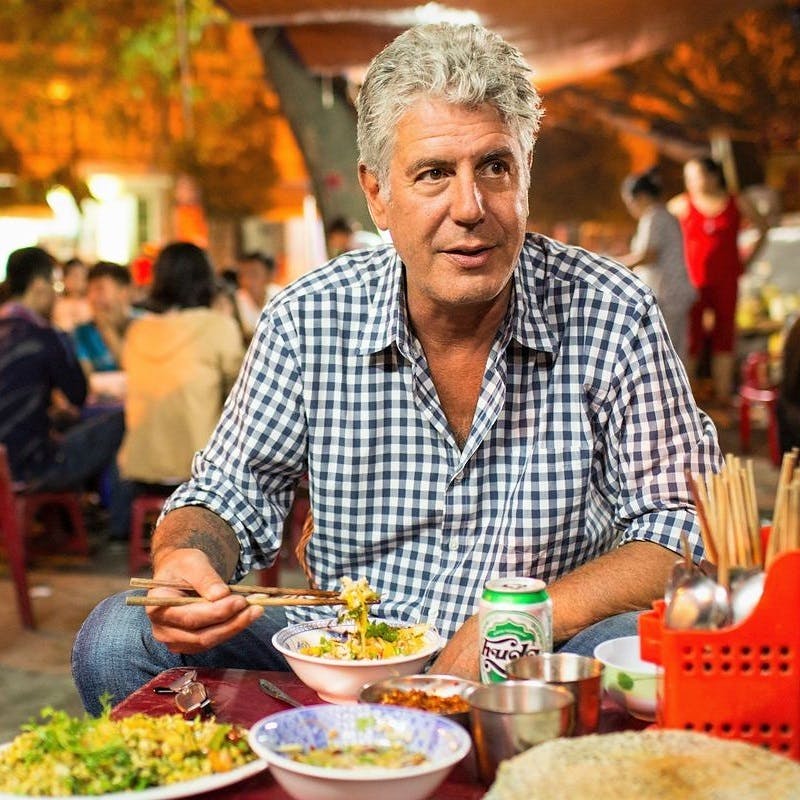
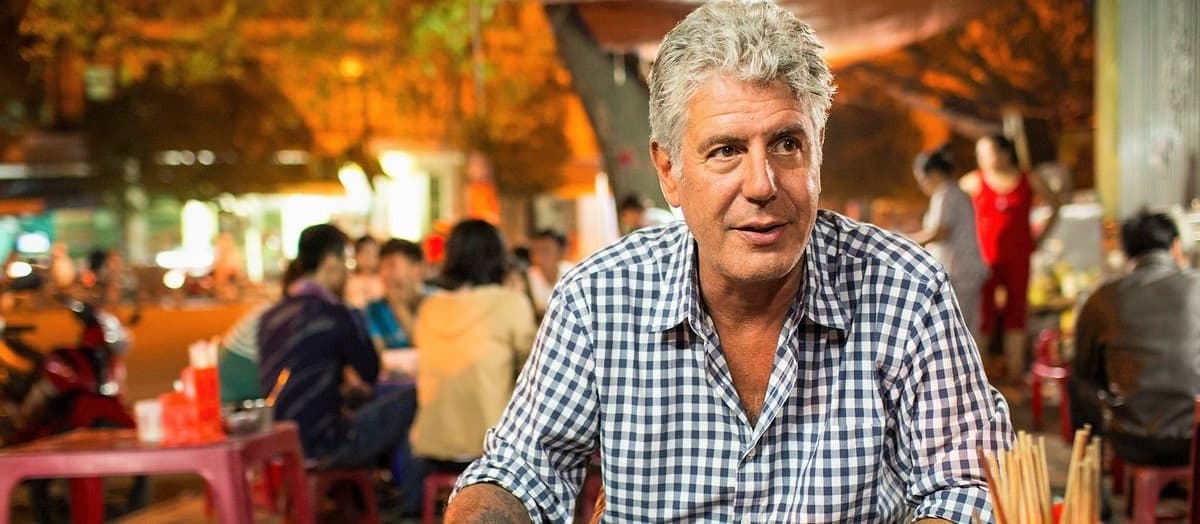
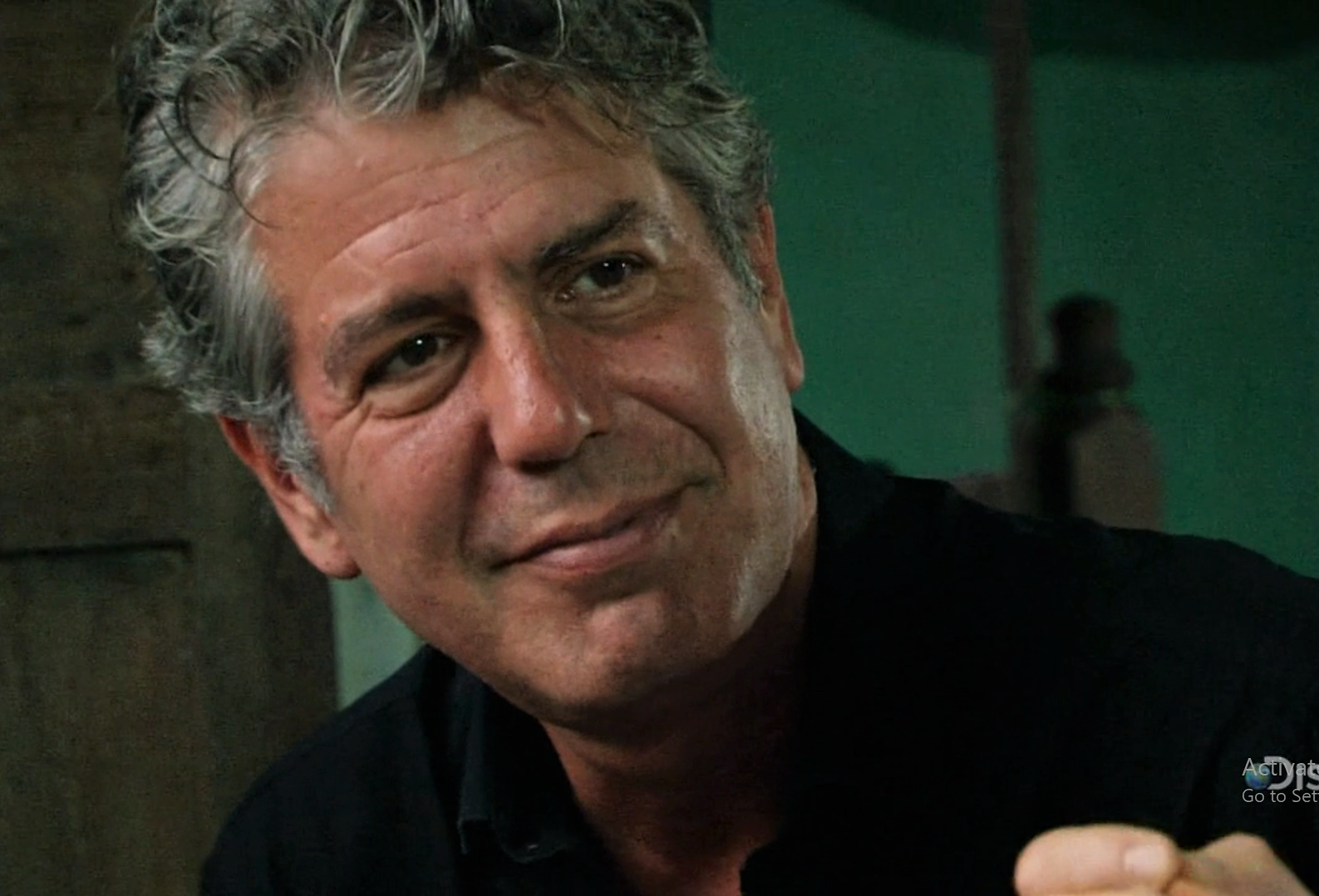
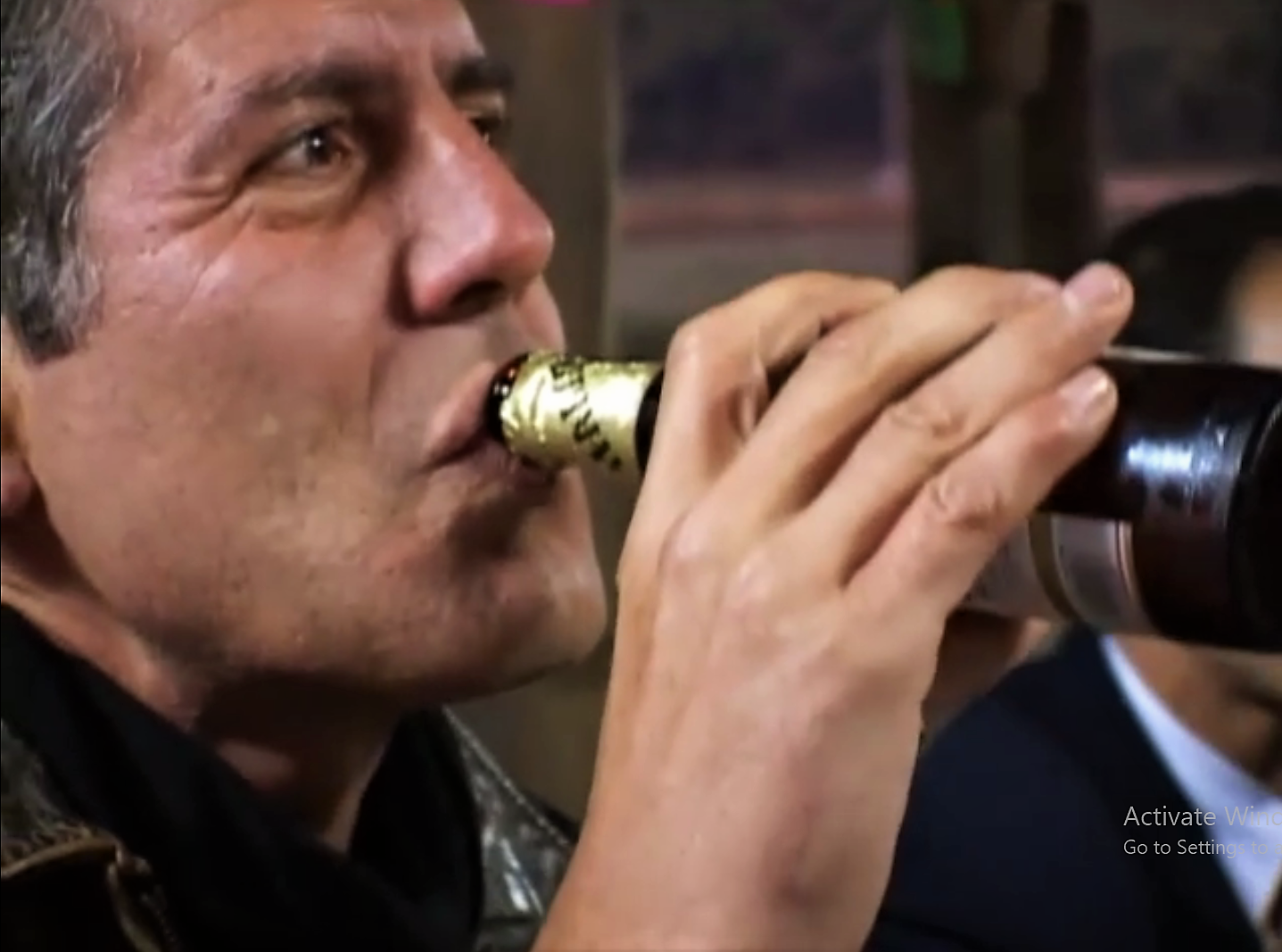
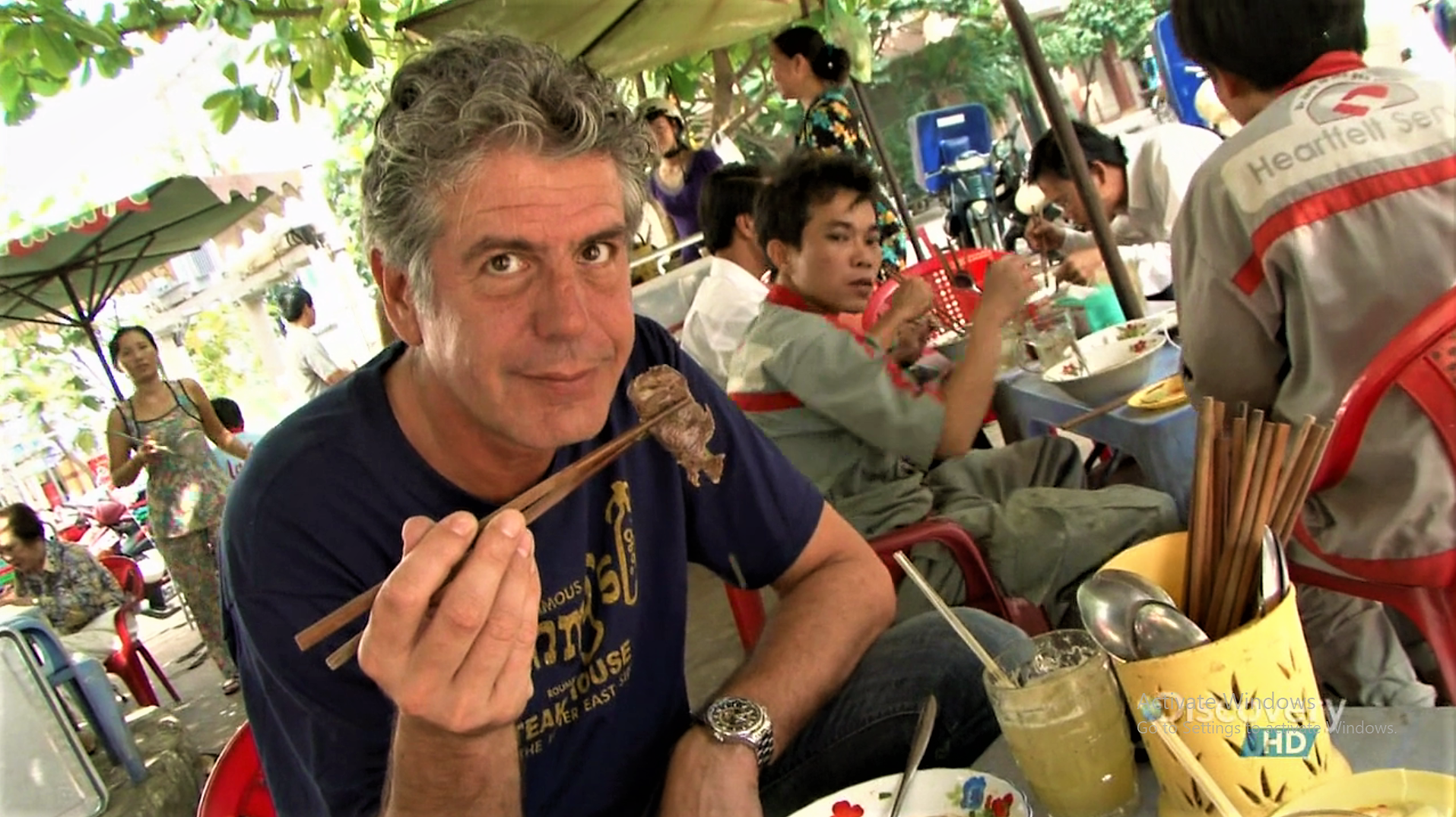
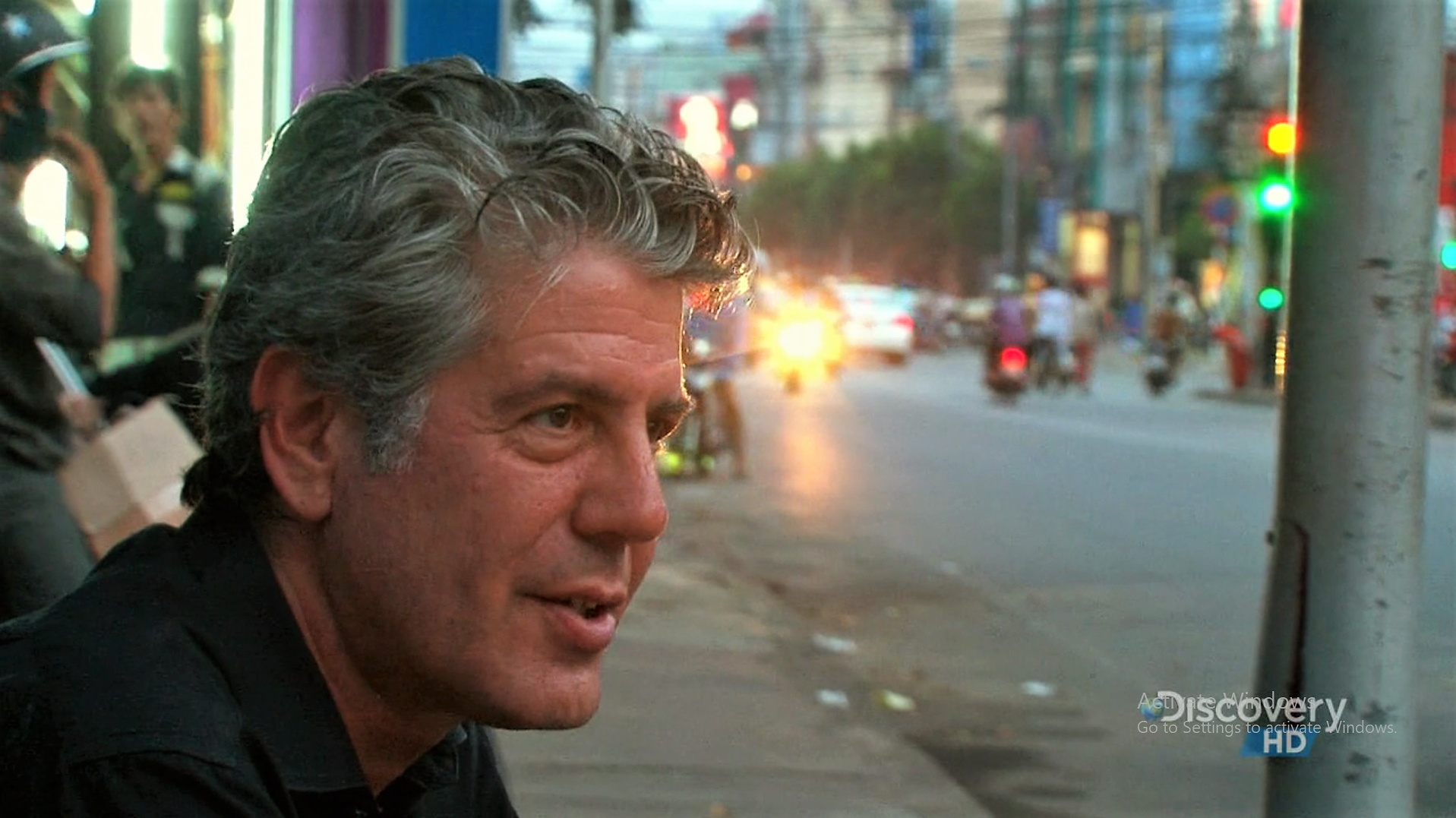
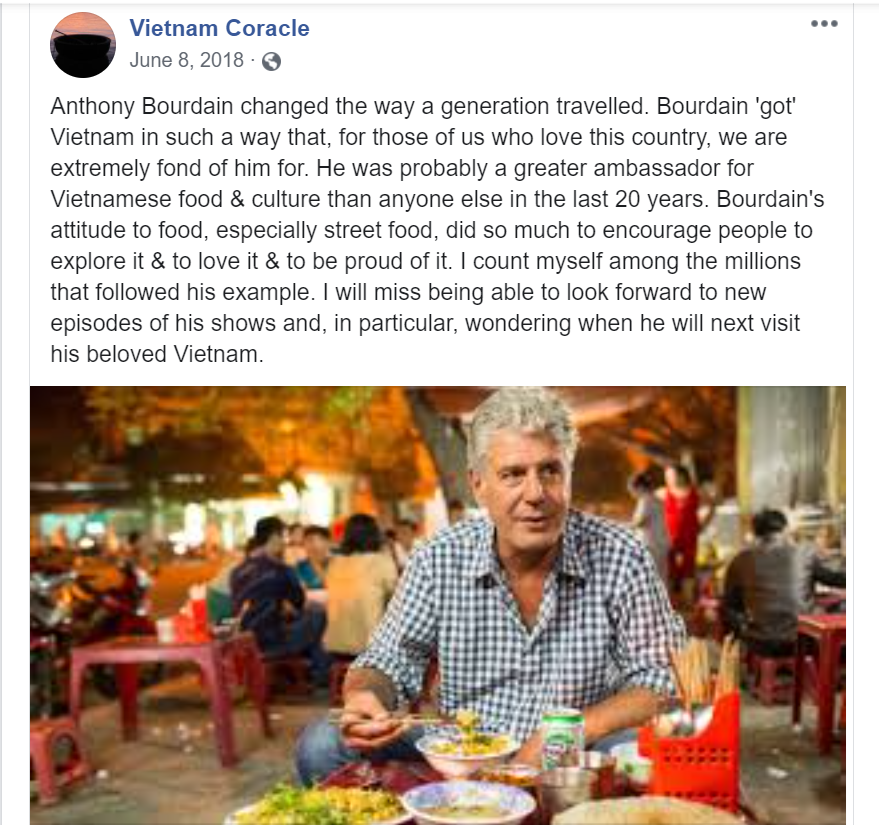
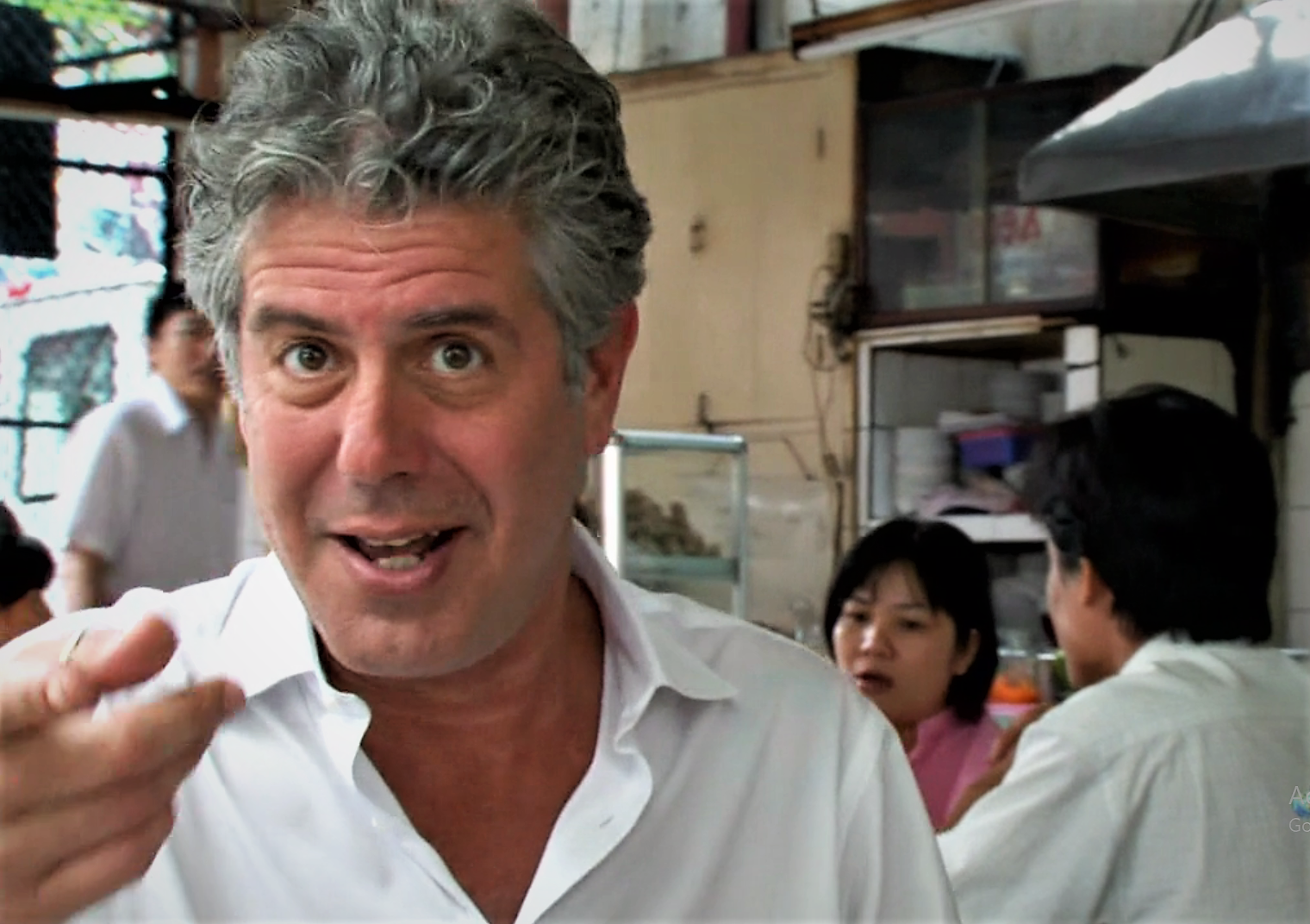
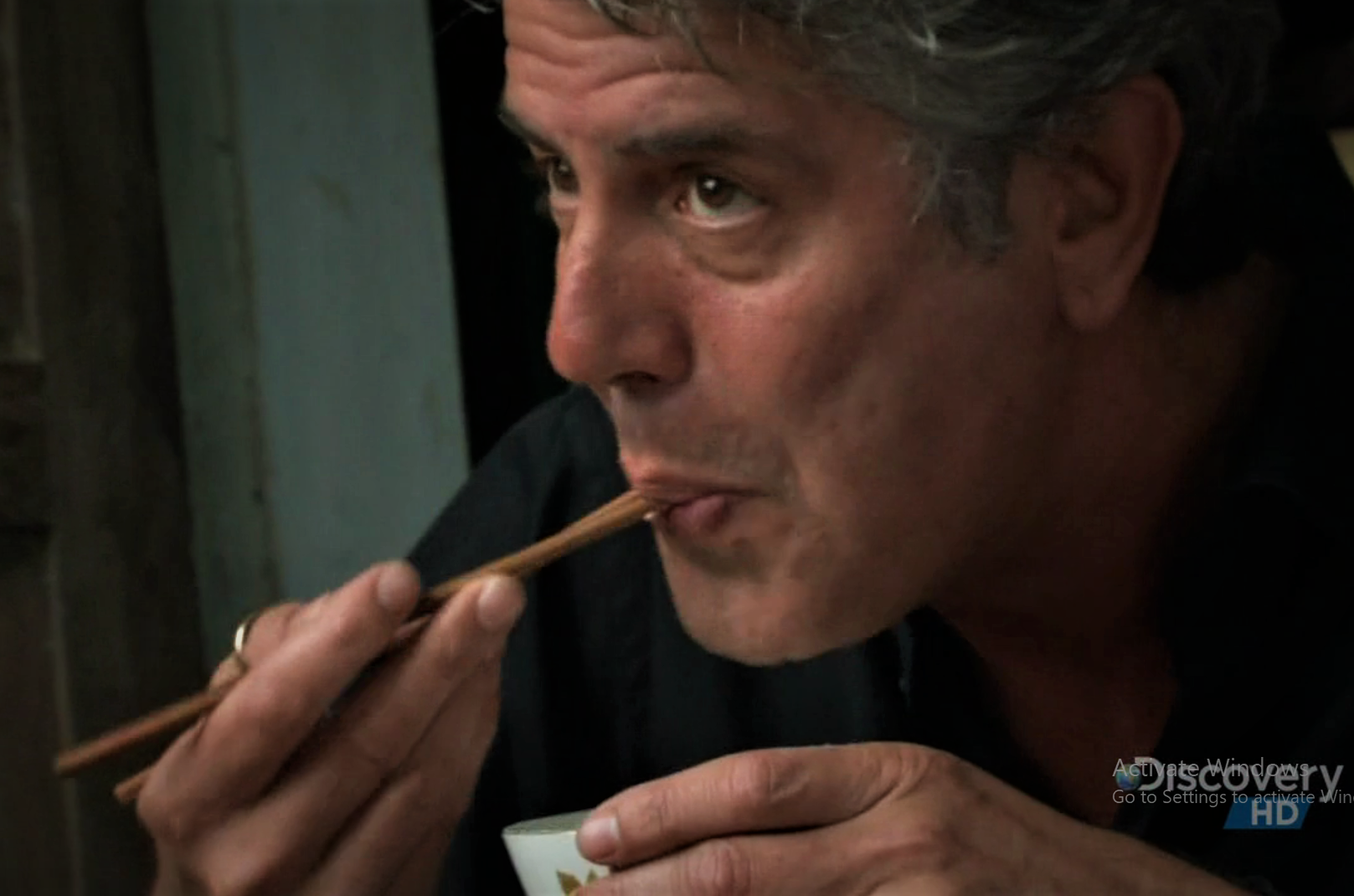

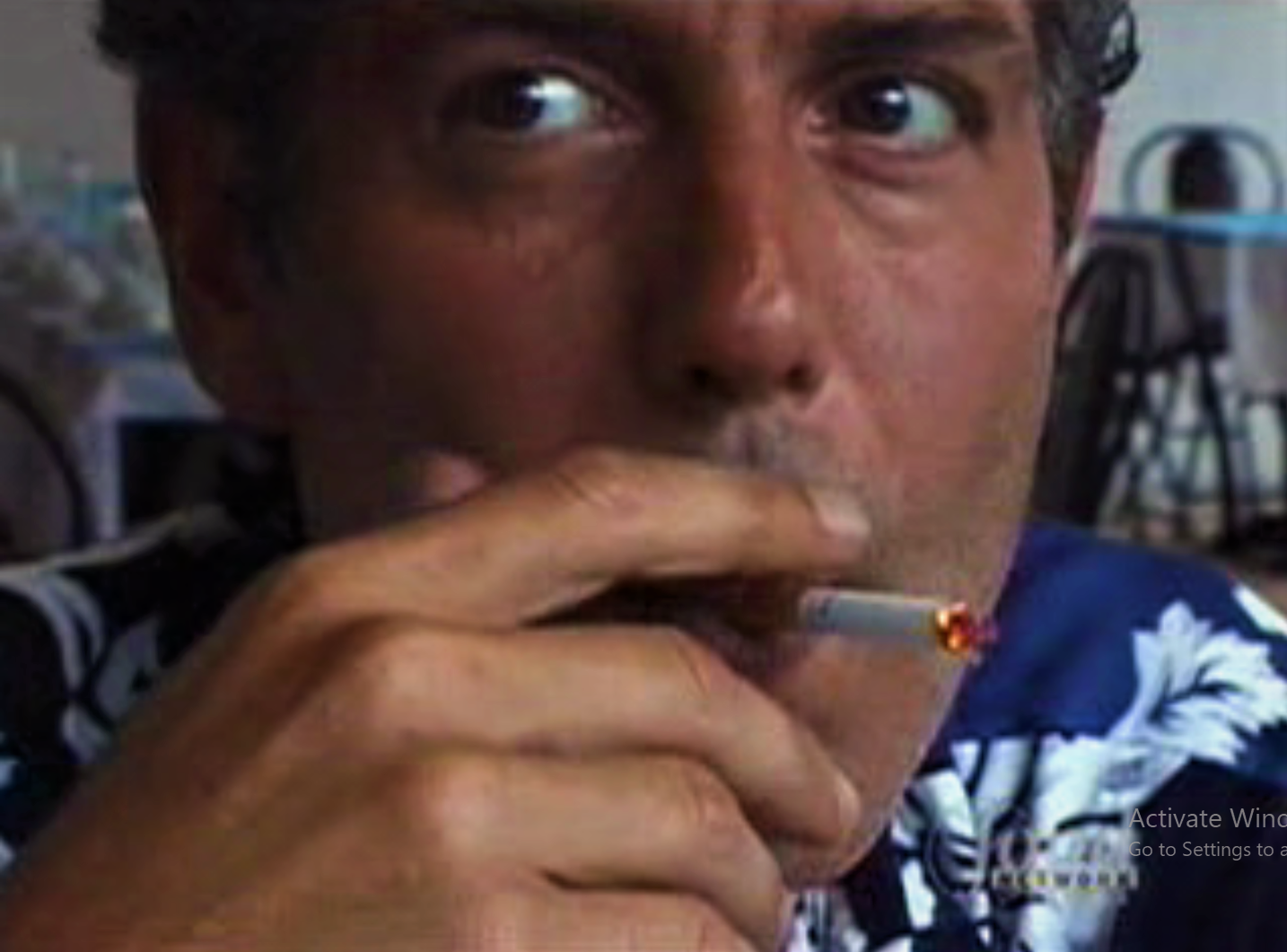
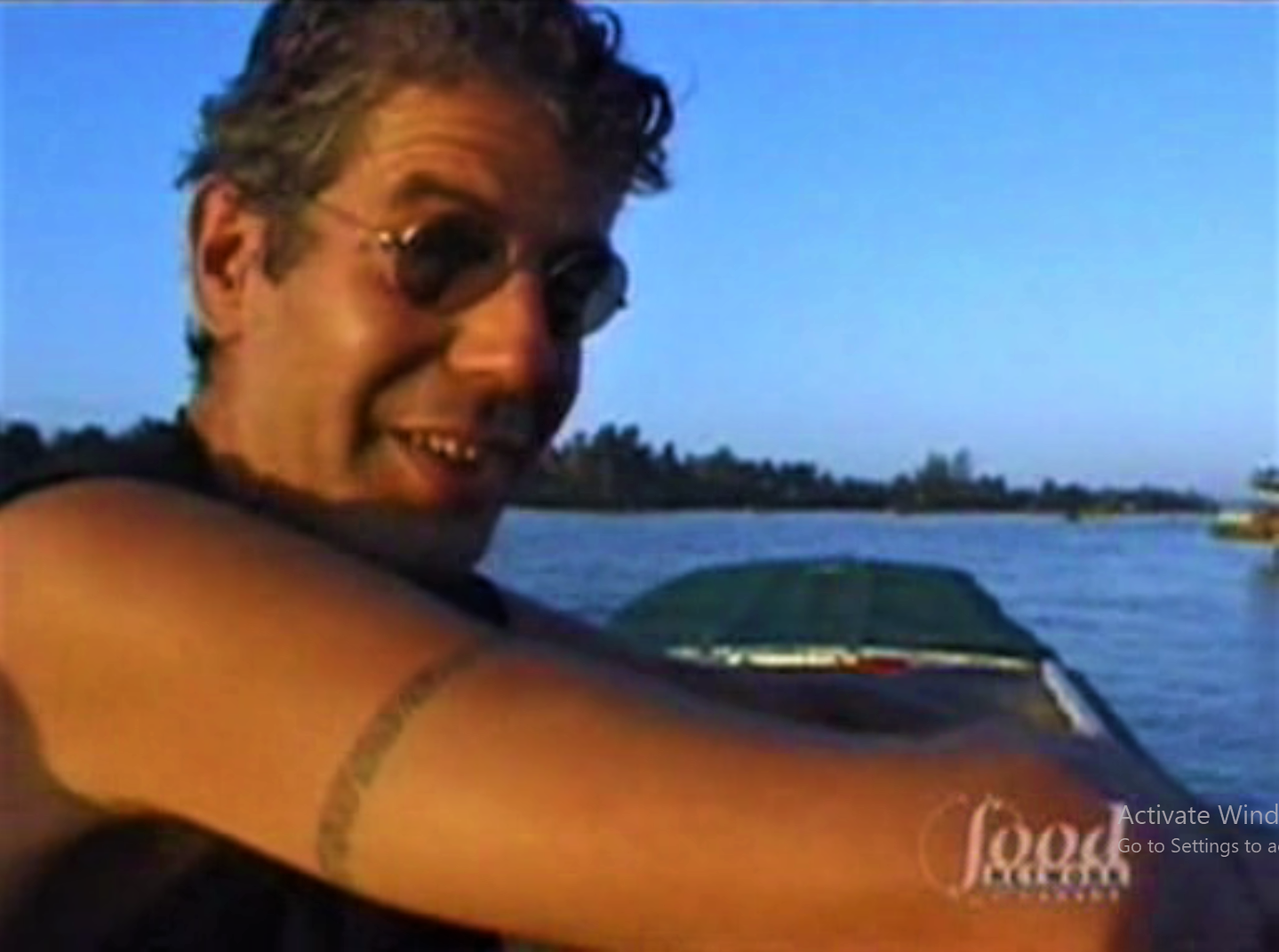
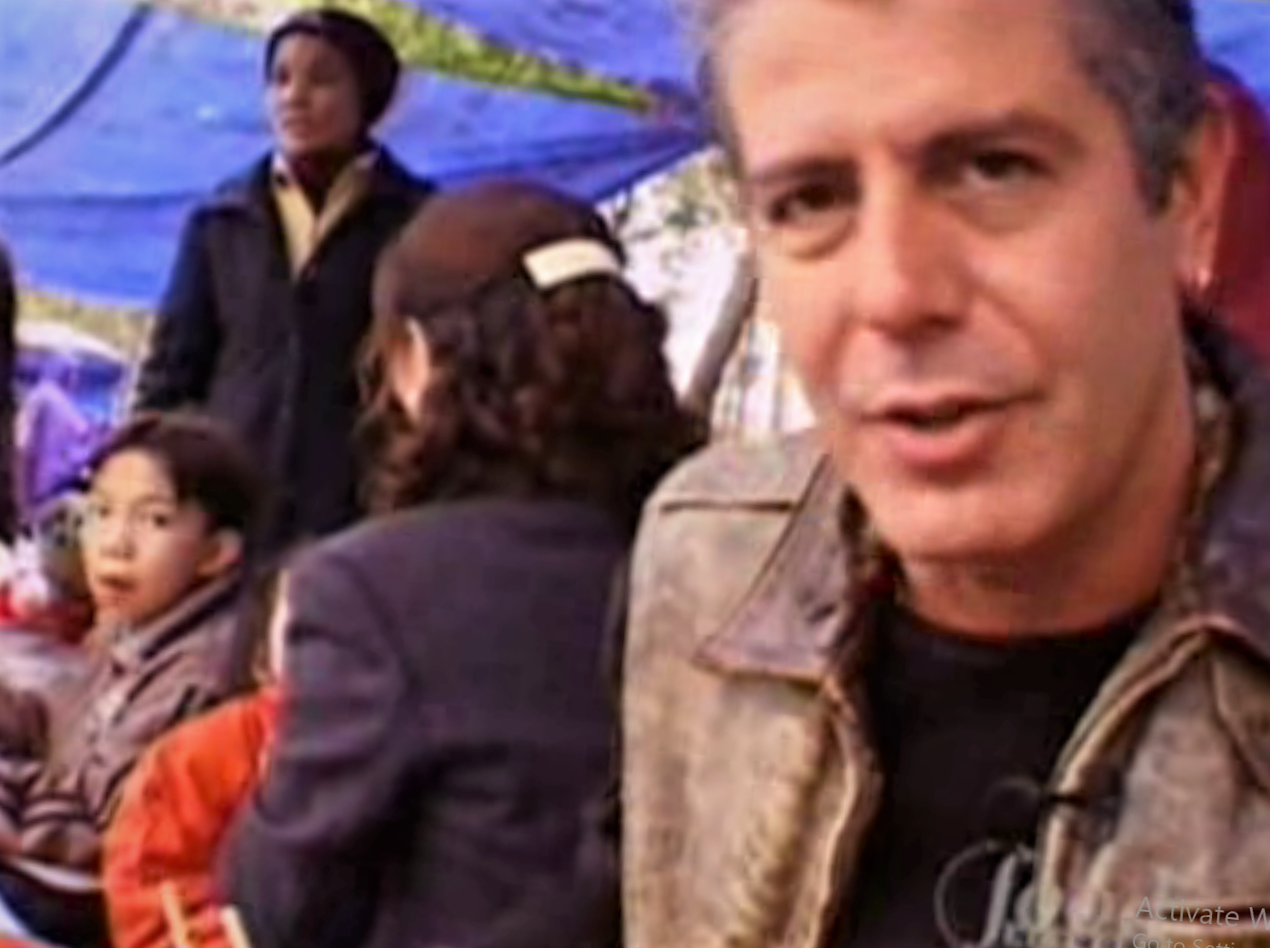
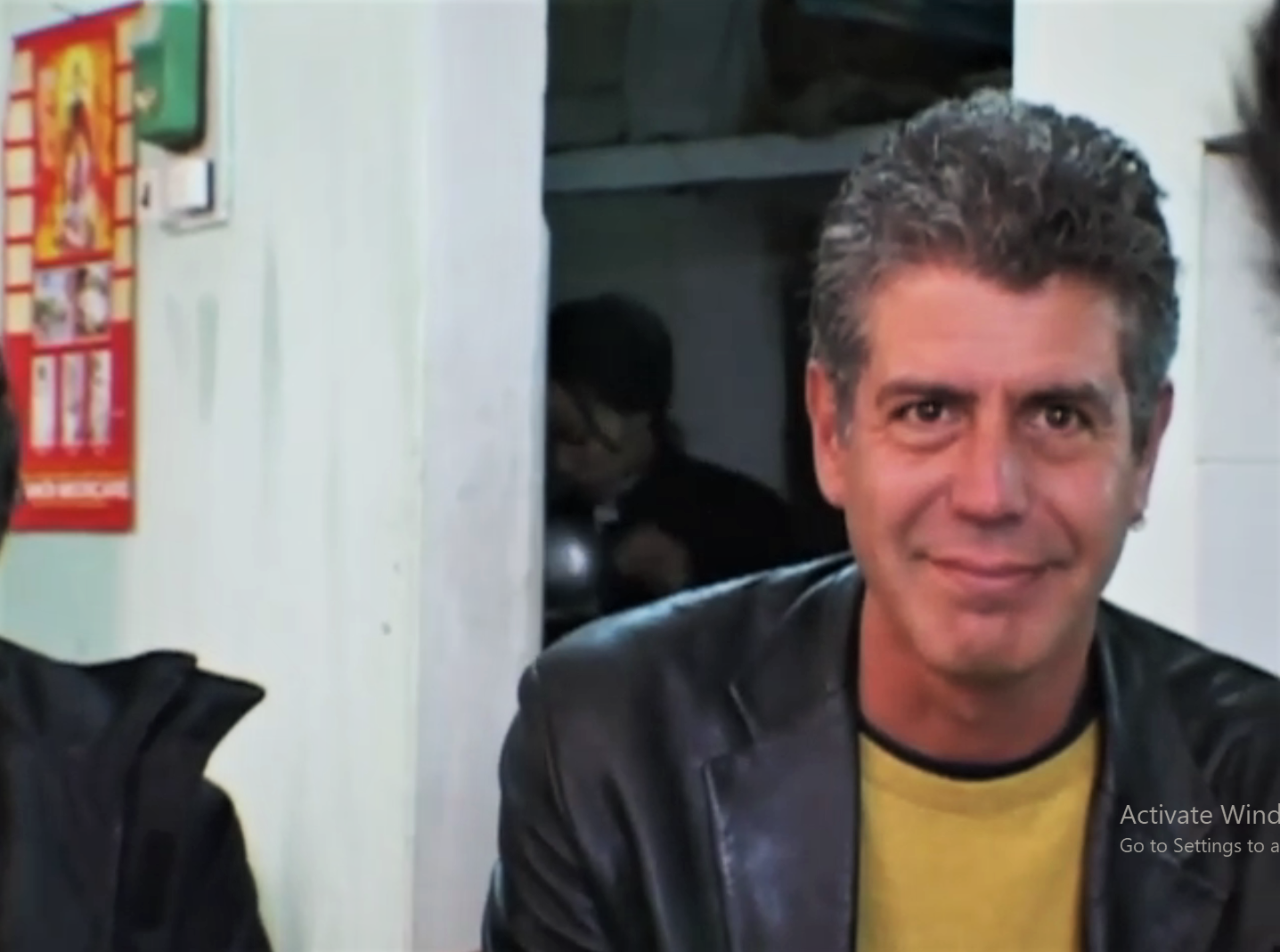
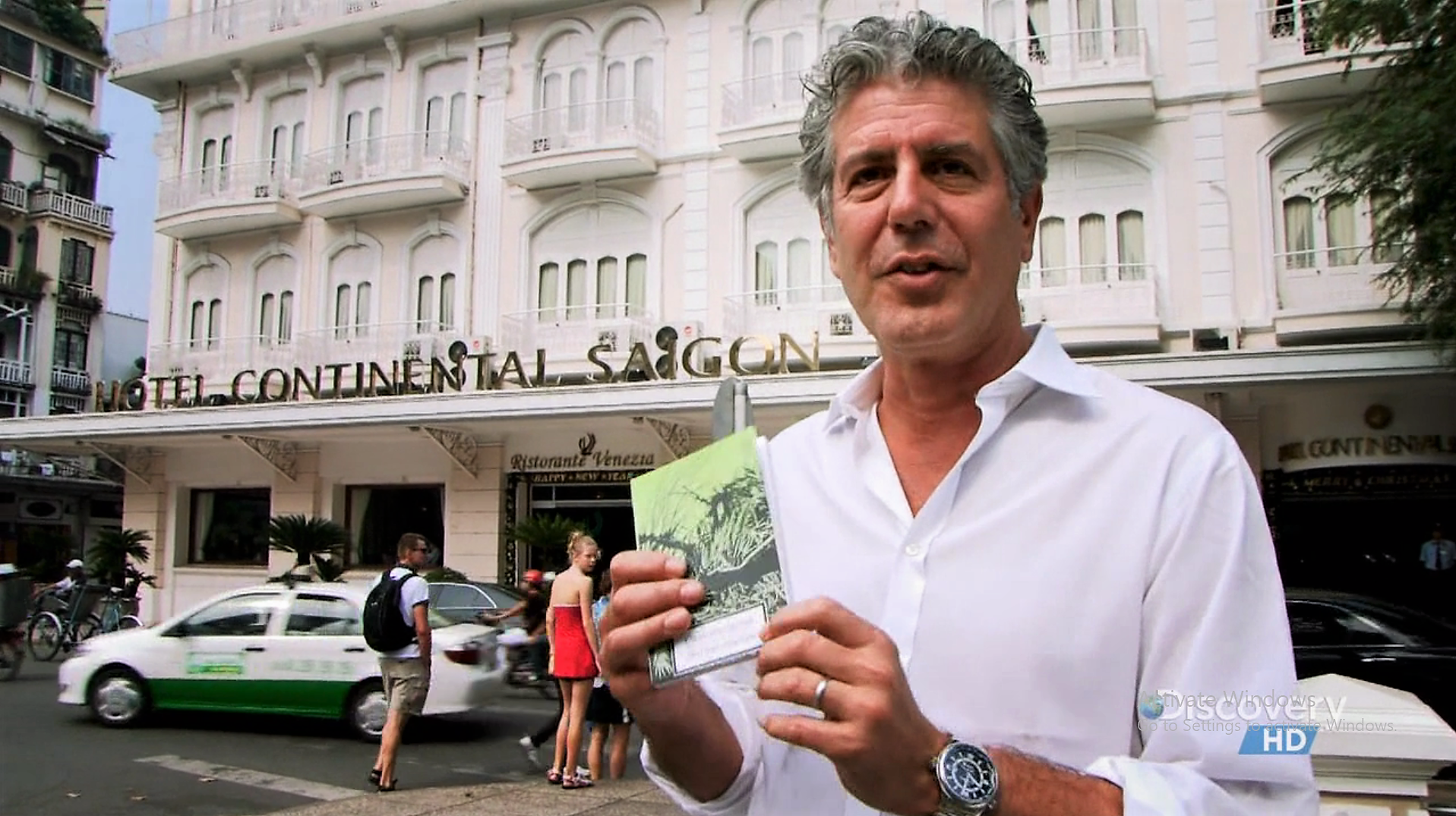
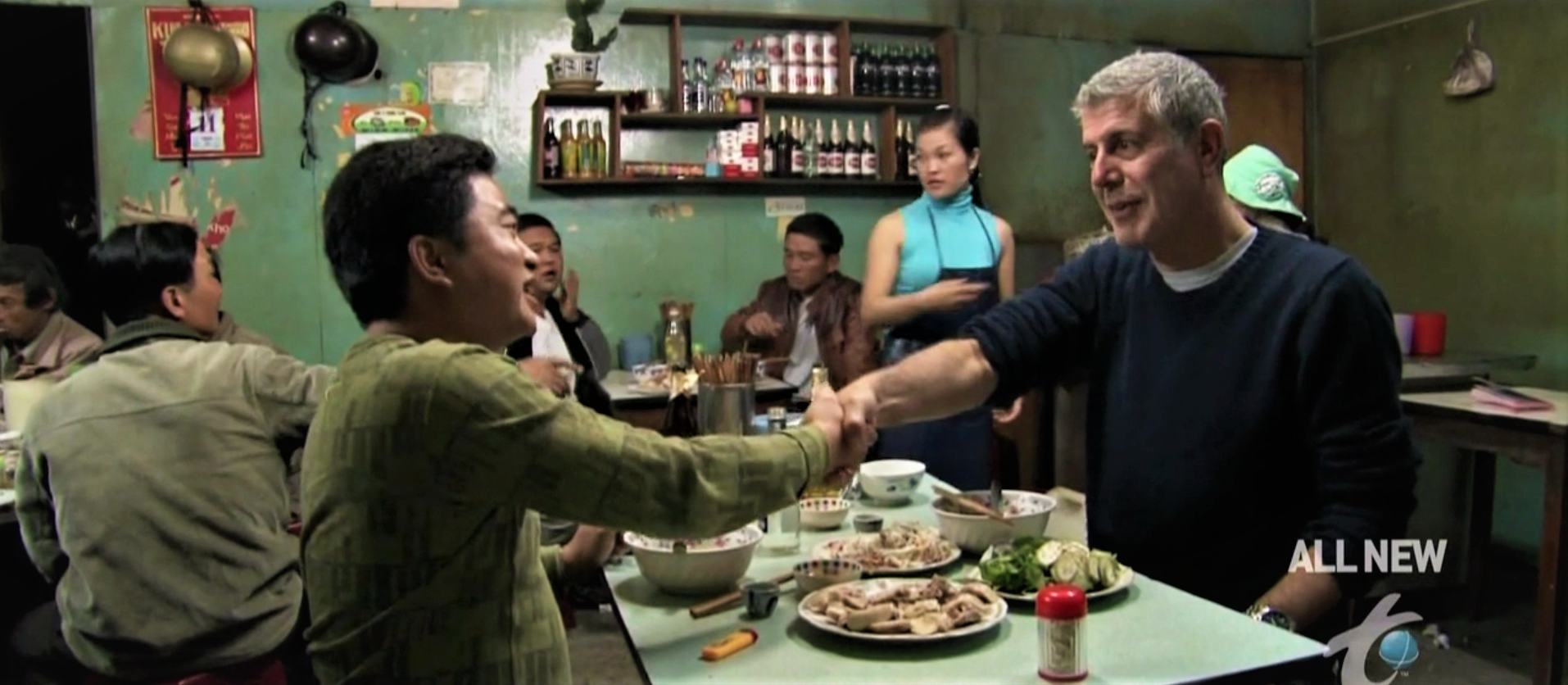
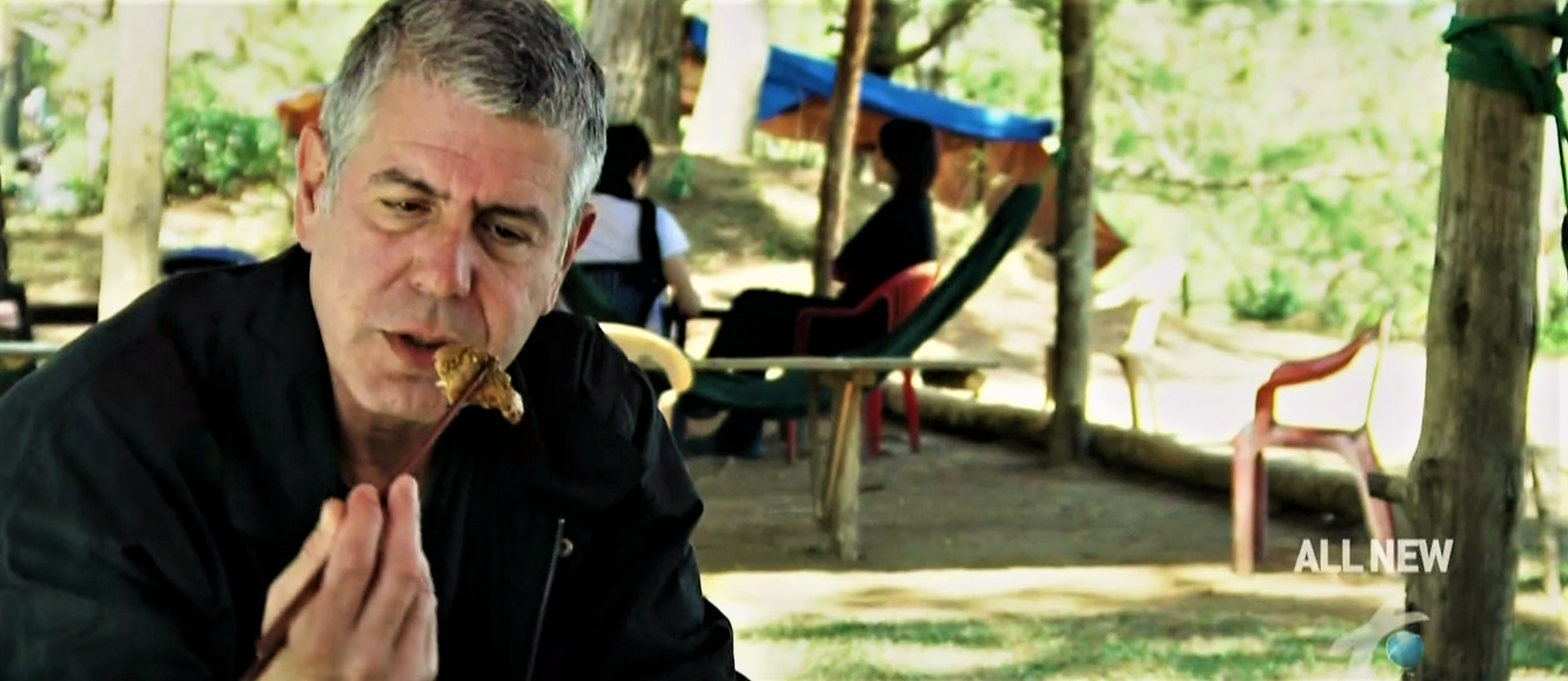
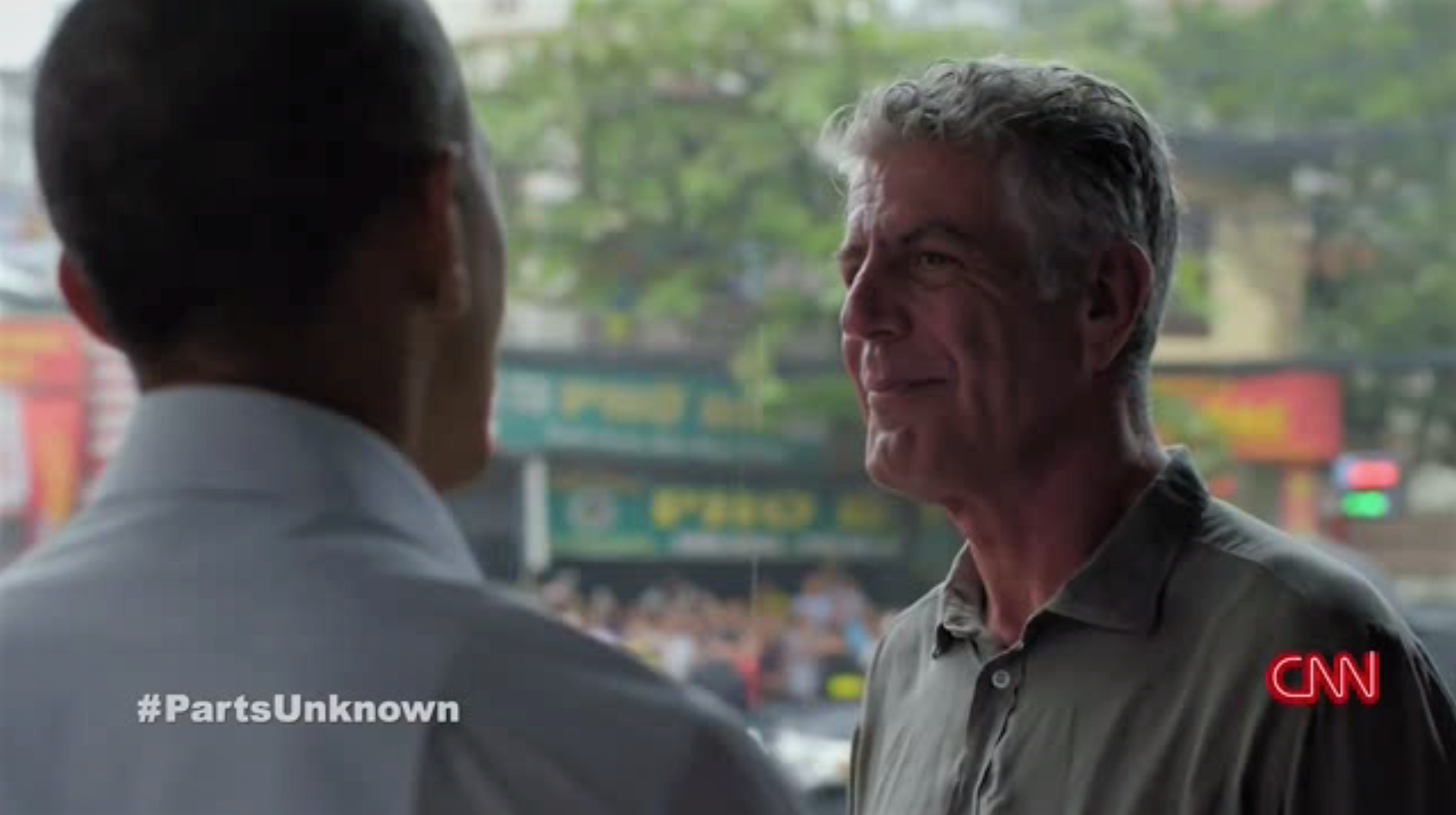
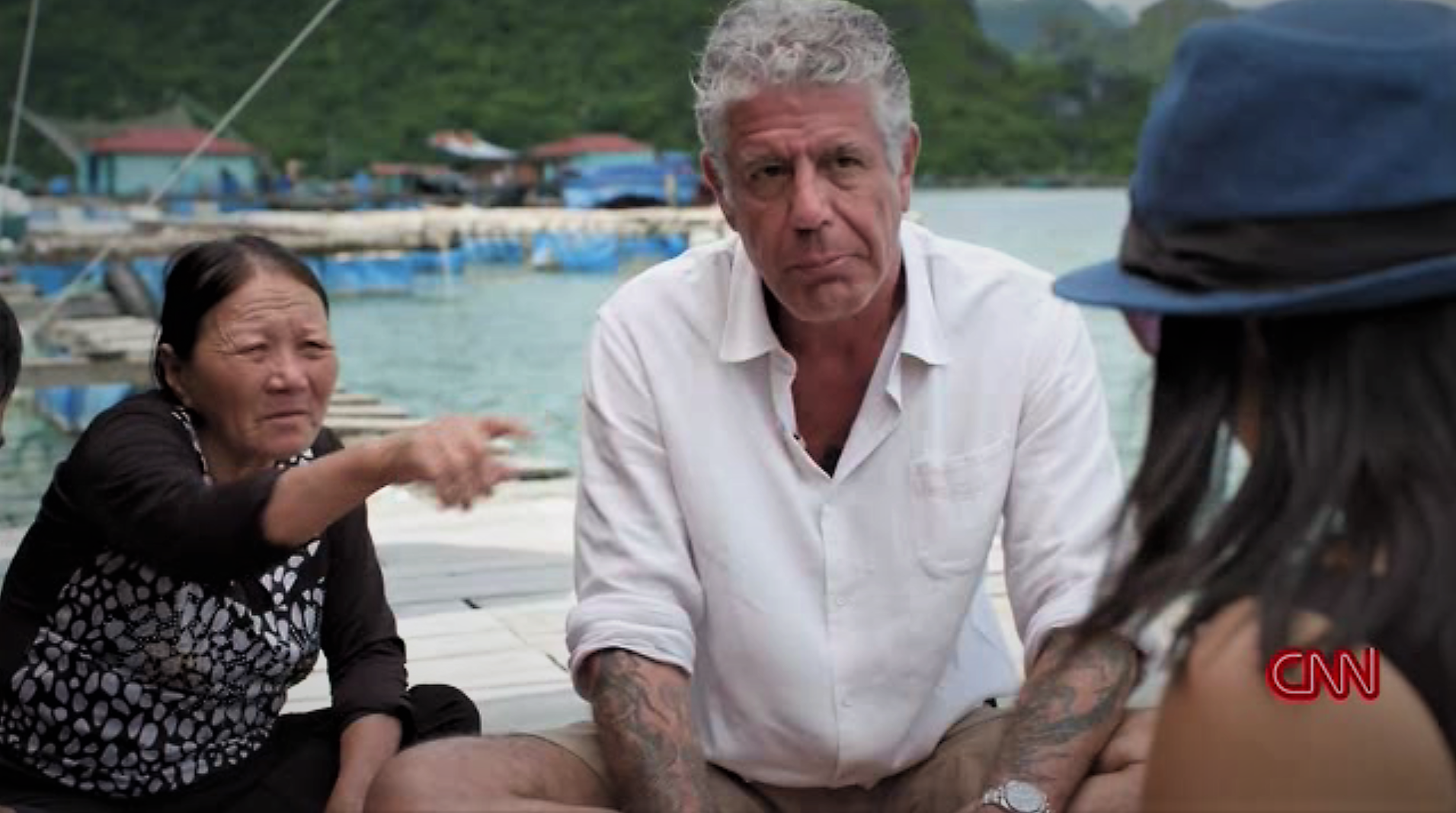
“There are still so many places for Bourdain to visit in Vietnam, so many more dishes for him to try, so many more episodes for him to make.”
That is the same thought and reason why I haven’t gone back to any episode or short clips of him, which appear in my YT feeds every now and then.
Hi Giang,
Yes, I know what you mean, and I know many other Bourdain fans who feel the same.
Best,
Tom
I sometimes wonder why people often acknowledge people’s death day (religious reasons aside)? Generally speaking that’s the worst day of a persons life and the saddest day for their loved ones and admirers.
With that in mind Anthony’s birthday is coming up on June 25 (1956), the day this intrepid traveller and lover of people was born!
Hi S Holmes,
Yes, it’s because in Vietnam ‘death days’ are commonly celebrated. Hence, I’ve chosen to remember Bourdain on his ‘death day’ in the context of his love of Vietnam.
Best,
Tom
Many Americans of a certain age only saw Vietnam in context with the American War. That view persisted in American culture and continued into the next generation. Bourdain was the first to see Vietnam as a unique country. I don’t think he ever mentioned the war in his programs.
Hi Paul,
Yes, I know what you mean, and in many ways (most ways, in fact), I agree that Bourdain painted Vietnam in a different context to what many Americans were most familiar with – that being war. However, he could never let the war go from his Vietnam episodes: Bourdain references the war – either directly or through cultural references, such as movies – in most of his Vietnam shows. This is totally understandable, but I personally looked forward to an episode that left the war out completely, thus focusing only on present-day Vietnam.
Best,
Tom
I’ll have to re-watch some of the episodes. I guess it was just my first impression that Bourdain dealt with Vietnam on its own merits as a young country with an ancient past and complex culture.
Thank you for your close and heartfelt reading of Bourdain’s odysseys to Vietnam.
I have watched the “Hanoi” episode 5 times with deepening appreciation and sentiment; it is my favorite of what I’ve seen of his work.
The episode is an apostrophe to gain — Vietnam’s as it heals from its history and ascends the world stage toward its future — and a eulogy to the Obama and Bourdain era, where sincerity and civility, for a short time, were given a stage.
“Is it going to be all right?”
While Obama and Bourdain were tour guides, we could believe it would.
Hi Jeff,
Yes, I agree, it’s a very poignant episode – it was at the time, but even more so now, with the knowledge of what was about to happen: to Bourdain, to American politics, to the World.
Best,
Tom
This is amazing Tom, just found ur blog after following you quite sometime in twitter. Anthony is one of my idol esp for Vietnam. Keep up the good work as always and thanks.
Thank you for the kind words!
Great to hear you admire Bourdain too. I hope you enjoy watching/re-watching these episodes.
Best,
Tom
Thank you for a great article as always!
It made me miss my hometown even more.
Thank you, Bao Tran 🙂
Thanks, Tom, for a moving and informative article that has me regretting that I didn’t enjoy Bourdain’s work when he was with us. He was a one-off for sure and we are all poorer for his absence.
Thanks, John.
This is wonderful, Tom.
A great tribute to Bourdain and Vietnamese food.
I never saw his programmes but have read some of his books which i greatly enjoyed.
Thanks
Vicki
Thanks, Vicki.
Yes, I enjoy his writing style too. I hope you get a chance to watch some of his TV shows sometime too.
Tom
If you have a Google account with a US credit card you can buy episodes of No Reservations and Parts Unknown a la carte for $2 or $3 (SD or HD respectively) on Google Play. Here’s a link:
No Reservations:
https://play.google.com/store/tv/show/Anthony_Bourdain_No_Reservations?id=cI-ABS8T6RA&hl=en_US&gl=US
Parts Unknown:
https://play.google.com/store/tv/show/Anthony_Bourdain_Parts_Unknown?id=qZqWbgwkJcc&hl=en_US&gl=US
Thanks, Ben.
Man, great review.
I didn’t know Tony because I’m Spanish and I was not interested about him. I think I first know about him when I came to Vietnam.
I have the feeling that Vietnam is changing very fast, but mostly I don’t see it as an inconvenient but something good. We will see how things evolve in the future.
I agree with Obama, eventually everything will be fine. The virus will be over and we will continue eating food with family and friends, and be able to travel!
I miss Spain and Thailand!
Thanks, Javier.
Yes, I hope so too.
Best,
Tom